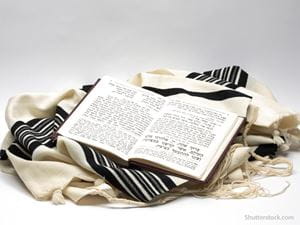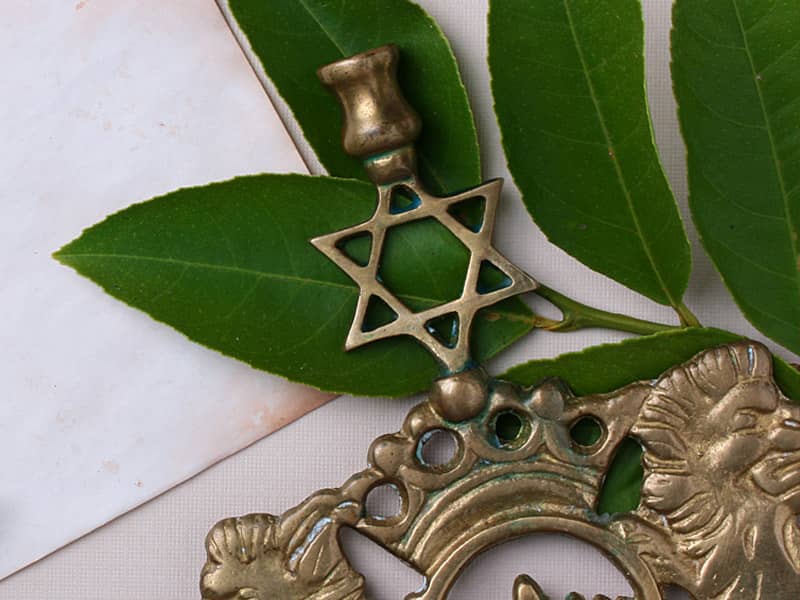
Yom Kippur holds a special place amongst Jewish holy days. Known as the Sabbath of Sabbaths, and occurring each year on the tenth day of the seventh month of the Jewish year, this holiday finds its origin in Leviticus 23:26.
This verse reads, “The Lord said to Moses, 'The tenth day of this seventh month is the Day of Atonement. Hold a sacred assembly and deny yourselves, and present a food offering to the Lord. Do not do any work on that day, because it is the Day of Atonement, when atonement is made for you before the Lord your God. Those who do not deny themselves on that day must be cut off from their people. I will destroy from among their people anyone who does any work on that day. You shall do no work at all. This is to be a lasting ordinance for the generations to come, wherever you live. It is a day of sabbath rest for you, and you must deny yourselves. From the evening of the ninth day of the month until the following evening you are to observe your sabbath.'”
Jewish texts show that, during Biblical times, Yom Kippur was the only time in which the high priest could enter the inner sanctum of the Holy Temple in Jerusalem, where he would make atonement and ask for God’s forgiveness on behalf of the people of Israel. The tradition continued until the destruction of the Second Temple, when it was translated into the form we see today.
The name “Yom Kippur” means “Day of Atonement,” and on this day, Jews who choose to observe this religious holiday live out Leviticus 23:26, and those who are not sick or elderly, or have not recently given birth, refrain from work, eating, and drinking, amongst other restrictions which are intended to prevent worshipers from focusing on the material world and superficial pleasures.
In Israel, Yom Kippur is a legal holiday, and the country shuts down television and radio broadcasts, airports, public transportation, and all businesses to observe it. It is considered extremely impolite to consume food in public, or to drive on Yom Kippur, and these practices are nearly universally avoided during this holy day.
This day is set aside as the final chance to atone for the sins of the past year before the Book of Life for that period of time is sealed, and God’s verdict for each individual is made permanent. According to the Jewish tradition, God judges all people during the 10 Days of Awe between Rosh Hashanah, the Jewish new year, and Yom Kippur, deciding whether each individual will live or die in the coming year. The day and evening of Yom Kippur are used to confess guilt, both publicly and privately. Each supplicant hopes that they have been forgiven by God by the end of Yom Kippur.
The prayer services of Yom Kippur include special texts and songs, and rabbis read from a specific prayer book called the machzor. Five prayer services take place throughout the course of the day, the first being on the eve of the holiday, and the last coming just before sunset on the following day. Of these prayers, the most important describes the atonement ritual performed by the high priests of Biblical times, and at the end of the final service, a single, long blast is blown from the shofar—a trumpet made from a ram’s horn—which marks the end of the fast.
The traditions of Yom Kippur include wearing white clothing—a symbol of purity—and some men wear a white burial shroud, called a kittel, to signify repentance. There are also feasts which occur both before and after Yom Kippur, the former meant to help worshipers gather strength before the fast, and the latter, to celebrate.
Many Jews also take advantage of the days leading up to Yom Kippur to volunteer and give to charity, which is seen as a way to atone and seek the forgiveness of God.
The idea of atonement, in Judaism, is described in the Talmud as being done through a process called Teshuva, which, at the most basic level, involves regretting sin, resolving not to commit that sin, and confessing that sin to God. Confession is called Vidui, and is a part of the prayer services of Yom Kippur. Jews recite the Vidui 9 times, beginning on Yom Kippur eve.
The concluding service of Yom Kippur, called the Ne’ilah, is unique. Ne’ilah means “closing the gate,” and refers to the ending of Yom Kippur and the sealing of the Book of Life. In this service, a representation of the ark lies open, and all who are capable of standing, do so out of reverence. There is a sense of urgency to this ceremony, which reminds worshipers that the time to repent is nearly up. At the end of the service approaches, the prayer leader and congregation recite three Biblical sentences whereby they rededicate themselves to the doctrines of Judaism.
The first of these sentences is the recitation of the Shema, the affirmation of faith. After this, there is a threefold repetition of “Praised is His name, whose glorious kingdom for ever and ever. Finally, “Adonai hu ha-Elohim,” which means “The Lord is God,” is repeated seven times. This is a denial of all idolatry, and an affirmation of the status of God as the one and only subject of worship. The subsequent blowing of the ram’s horn symbolizes the certainty that all have been granted divine forgiveness and have had their names inscribed in the Book of Life for a good year. This confidence is expressed as Jewish worshipers join in saying “next year in Jerusalem”.
This last statement expresses a sense of hope for the coming year through the symbol of Jerusalem—the “city of peace,” and the representation of the ideal. The essence of Yom Kippur is one of hope—hope for forgiveness, for salvation, and for a new year filled with the light and glory of God.
For further reading, find out more about Yom Kippur here.

